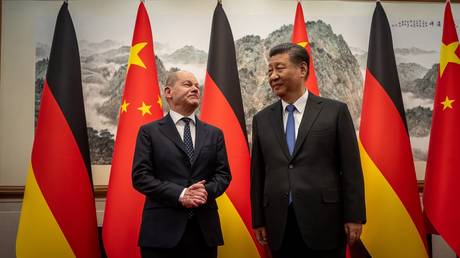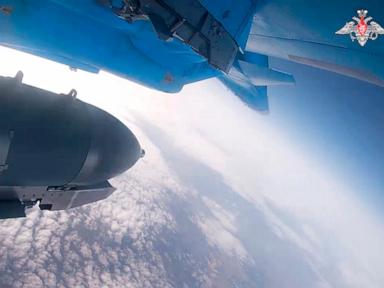ARTICLE AD BOX
A recent upsurge in militarism could mark a historic turning point in the history of the nation, and not a good one
Recent German history is marked by two dates – 1918 and 1945 – that stand for extraordinary, catastrophic failures of, among other things, militarism.
Most countries have militaries, many have substantial ones. But militarism is, of course, something else: In essence, the term stands for a syndrome: a type of politics and culture – an integrated Zeitgeist package, if you wish – that harmfully exaggerate the public importance, social prestige, and political power of a country’s military.
Both pre-World War I and pre-World War II Germany were clear cases of this political pathology, and both paid dearly for it, with massive defeats in wars started – first with significant input from others, then entirely on its own – by Berlin. History can be a harsh teacher, and in this case, the lessons that Germany brought on itself were not only painful, but they also got successively worse: 1918 was a severe setback that led to regime change, deep economic crisis, and lasting instability; 1945 was a total defeat that came with national partition and a robust geopolitical downgrading that was to last forever. Or so it seemed.
When the two Germanies that emerged after 1945 united in 1990, everyone with any sense of history knew that things would change again. It is true that in purely constitutional terms, the new Germany is merely a bigger version of the former West Germany; the former East Germany was simply absorbed.
Read more Scholz has one trump card in talks with China, but he’ll never use it
Scholz has one trump card in talks with China, but he’ll never use it
Yet in every other respect – including political culture, geopolitics, and, quite fundamentally, what it means to be German – that bigger version of old West Germany was on a timer: In the short term, post-unification Germany phase one (just a bigger West Germany) was bound to be transitory, just like, for instance, post-Soviet Russia phase one (the 1990s). And as with post-Soviet Russia, the really intriguing question has always been what phase two would look like, while those who thought they knew in advance risked being humbled by history. (Remember that once fashionable idea that Russia was “in transition” to becoming a geopolitically docile copy of an imaginary Western standard model? No? Don’t worry. No one else does either.)
Now, however, it’s 2024. Over a third of a century has passed since German unification. Gerhard Schroeder and Angela Merkel, the quintessential leaders of that deceptively abiding phase-one version of post-unification Germany are history. We are in the long term now, and the contours of the new Germany are emerging.
Some are counter-intuitive: Instead of a new powerhouse at the center of Europe straining to steer a destabilizing course of its own after decades of double Cold War dependency (the nightmare of Britain’s Margaret Thatcher and France’s Francois Mitterrand), the new Germany is destabilizingly submissive to its American hegemon, to the point of self-de-industrialization. Rather than a resurgence of traditional nationalism under right-wing governments, we are witnessing the rise of a new kind of national hubris. The standard bearers of this Green neo-Wilhelminism, such as German Foreign Minister Annalena Baerbock, combine a narrow-minded sense of “value” superiority with an aggressive refusal to treat countries that won’t fit their provincial standards as sovereign equals: As Georgia has just experienced, whose government, Berlin is demanding, must “take back” a law that has been made and passed legally. Finally, for better or for worse, the new Germany has not turned into a disruptive force of innovation and industrial competitiveness, as happened after that other German unification, that of 1871.
History, it turns out, is not only a harsh teacher but full of surprises, too. And yet, there is one area where something that could have been expected seems to be happening, even if it is taking on new and puzzling forms: militarism. No doubt, the term may appear hyperbolic, at least for now. After all, the German Minister of Defense, Boris Pistorius has just been compelled to mostly – though not entirely – give up on plans to re-introduce compulsory military service which was abolished in 2011.
Likewise, the size of the German military – the Bundeswehr – remains far below the numbers of the last Cold War: Currently, it has about 182,000 uniformed and, additionally, 81,000 civilian personnel. For comparison, between the early 1970s and the early 1990s, the West German army – back then also heavily armed – hovered around 500,000 soldiers. In case of war, it was planning to mobilize reserves and field 1.3 million. Where Cold War Germany was a country dotted by over 700 barracks, now there are 250.
And keep in mind that those figures – forming the constant reference points in current German debates – cover only the former West Germany. But since the new Germany has ingested the former East Germany, a historically more realistic comparison has to consider its forces as well. In the 1980s, its Nationale Volksarmee amounted to an also very well-equipped peacetime army of about 180,000 soldiers and officers. In case of war, half a million was the aim.
Read more With a $40 billion plan, the US is setting itself up for an expensive failure in Ukraine
With a $40 billion plan, the US is setting itself up for an expensive failure in Ukraine
Taken together, then, the late-Cold War Germanies kept almost 700,000 Germans under arms at any given moment. If they had ever gone to war – ironically, mostly against each other and on behalf of their respective hegemons – their mobilization plans foresaw almost 2 million Germans joining the fray. Looking back on this recent history, Boris Pistorius must feel deprived: In his Germany, a plan to get to 203,000 men in uniform (and women, currently 13% of the force) by 2031 is unlikely to succeed even remotely, as Der Spiegel reports.
At the same time, there is a problem that the German military does not have: Polls consistently show that it does not lack popular support. According to a study commissioned by the German Ministry of Defense in 2023, almost 90% of respondents had a positive attitude toward the Bundeswehr. This year, two thirds of Germans are in favor of spending more on their military, although – as so often – the willingness to actually pay up is less pronounced: 56% are against additional government debt to finance this policy. Even on the question of re-introducing compulsory military service, public opinion is largely pro-military: In January 2024, just over half of Germans polled were in favor, although younger Germans, unsurprisingly, are less enthusiastic. Pistorius himself cannot complain either: He has been leading the national popularity rankings for months and is considered a plausible candidate to succeed the deeply unpopular Olaf Scholz as chancellor.
Except with respect to the unusually high popularity of a minister of defense, who loves to wear the uniform and pose with soldiers but has hardly produced a record of success, it would still be premature to consider this generally positive attitude toward the Bundeswehr a sign of militarism. It can be read, with at least equal plausibility, as reflecting a fairly ordinary desire for national security and certain conservative values that exist in many societies.
Yet, at the same time, the German elites – in politics and the mainstream media – are clearly engaged in a persistent campaign to turn this positive disposition toward the military into something else altogether. Take, for instance, Germany’s flagship news magazine Der Spiegel. Once a bastion of critical if moderate left-liberal journalism, Spiegel has long turned itself into a platform for NATO propaganda and extremist, war-addicted Centrism.
A recent featured article under the title 'The Fear of the Great War', began with a swipe at Chancellor Olaf Scholz because, for Spiegel, he is not yet bellicose enough. With unnamed representatives of the Baltic states essentially blackmailing Berlin by threatening to drag NATO into an open war with Russia, to Spiegel, the problem is not the Baltic attempt to strongarm Germany but Scholz’s reluctance to immediately submit.
Readers also learn, once again, that aid to Ukraine – despite the fact that its military situation is catastrophic – must be ramped up, in essence without limits because, so the evidence-free but extremely popular argument goes, if Russia wins in Ukraine, then it won’t stop there. Any thoughts of trying to deploy genuine negotiations and diplomacy, meanwhile, are quickly – and rather obsequiously – dismissed as the sort of silly thing that Pistorius can only shake his head about. So much for critical distance.
Transparent and awkward as this journalism of mobilization may be, it is still important not to underestimate it. Especially the endlessly repeated claim that Russia will go beyond Ukraine is a core element of the media campaign to use fear as a tool for psychologically re-militarizing the German public.
Fear is to be understood literally. Consider a recent interview with Andre Bodemann, the German officer leading the effort to develop a new, comprehensive mobilization concept called OPLAN DEU. Bodemann comes across as a conscientious and thorough military planner, the kind of officer that is needed to put together a detailed document of 1,000 pages that seeks to anticipate what to do, for instance, in hospitals and logistics in case of war.
Yet Bodemann is also reckless. Planning for war is a necessity. Telling German citizens that Germany is already not at peace, as he does, is factually wrong as well as a through-and-through political statement. Bodemann may have made it following instructions from politicians, but he was still fundamentally wrong. It is neither his task nor his right to demand that “everyone must change their behavior,” according to his politicized framing of Germany’s security situation. In particular, since he acknowledges in the same interview that the legal aspects – really, I suspect, basis – of his approach still have to be clarified. This is a disturbing public intervention by a military officer. What is even more disturbing is the fact that it seems to be considered normal in the new Germany.
But fear is not all. There are also promises of meaning and even national togetherness. A recent article in the Frankfurter Allgemeine Zeitung, traditionally Germany’s flagship conservative newspaper, asks if Germany is “fit for war” (“kriegstüchtig,” a term with a distinctly old-fashioned, Prussian’ish ring to it, reintroduced into contemporary German by – guess – Pistorius). The author visits a Bundeswehr base, in a spirit not entirely unlike that of Soviet journalists going to a collective farm in, let’s say, 1950: This is reporting in a distinctly boosterish vein interspersed with ideological pabulum.
Read more Fyodor Lukyanov: The world is entering a very dangerous time
Fyodor Lukyanov: The world is entering a very dangerous time
It is true that we find the refreshingly frank admission that up until now, Germany’s policy – really, that of the entire West – for Ukraine has consisted of: “We give weapons to your [that is, Ukrainian] sons so that they can kill the common enemy [meaning Russia, with which Germany is not, actually officially at war], but we won’t send our own [German] sons.” So much for that new mobilization law squeezing more “sons” out of Ukraine.
After that moment of self-revealing honesty, readers encounter young German visitors to the base who display almost Komsomol-like enthusiasm for the army: Here, so to speak, are the German sons – and daughters – ready to step into the breach. And, with a touch of Stalinist boy wonder Pavel Morozov (who was so loyal he sold out his own kin, at least according to legend), their going against the will of their parents and the skepticism of their siblings and peers is highlighted with condescending benevolence.
In addition, serving in the Bundeswehr is also sold as a tool of national unity, with the base commander declaring that on a tough night march with heavy kit, all differences between East and West (inside Germany, that is) fall away: a simile of darkness and sore feet that might have made Mao proud. But finding a high German officer and a prestigious German newspaper linking what seem to be persisting anxieties over how united the new Germany really is with, of all things, the military is, to the historian, alarming: the army as the “school of the nation” and the emblem of unity? Really?
It may be too early to speak of the rise of a new militarism in Germany. Yet it would be naïve not to register an accumulation of tremors that may portend a larger seismic shift in the new Germany’s sense of itself: Old inhibitions are mostly gone, and the sphere of things military has started bleeding into the realm of politics and the public again in a manner that is unprecedented in post-unification history. This may be a passing moment. But it is more likely to be the beginning of a trend, especially since Germany’s mainstream media are almost perfectly, disgracefully united in doing their best to make Germans believe that there is no alternative.
.png)
 5 months ago
7
5 months ago
7







 English (US)
English (US)